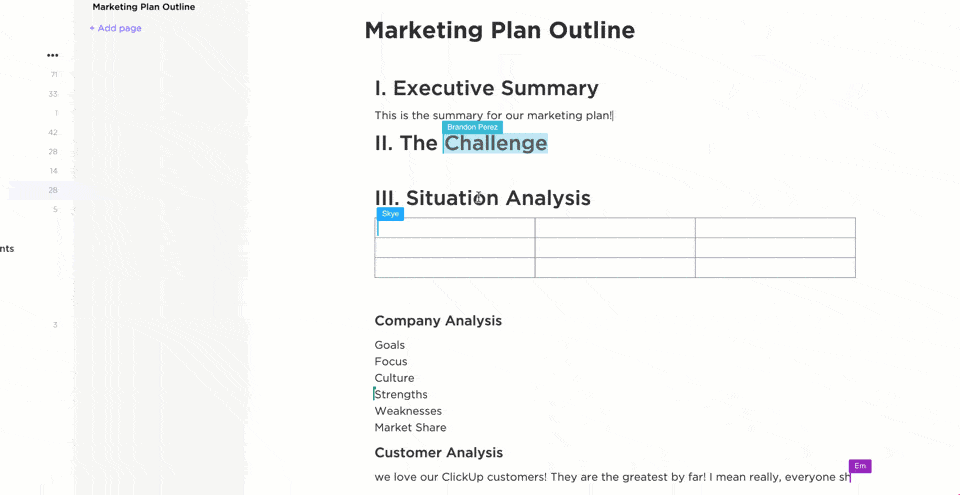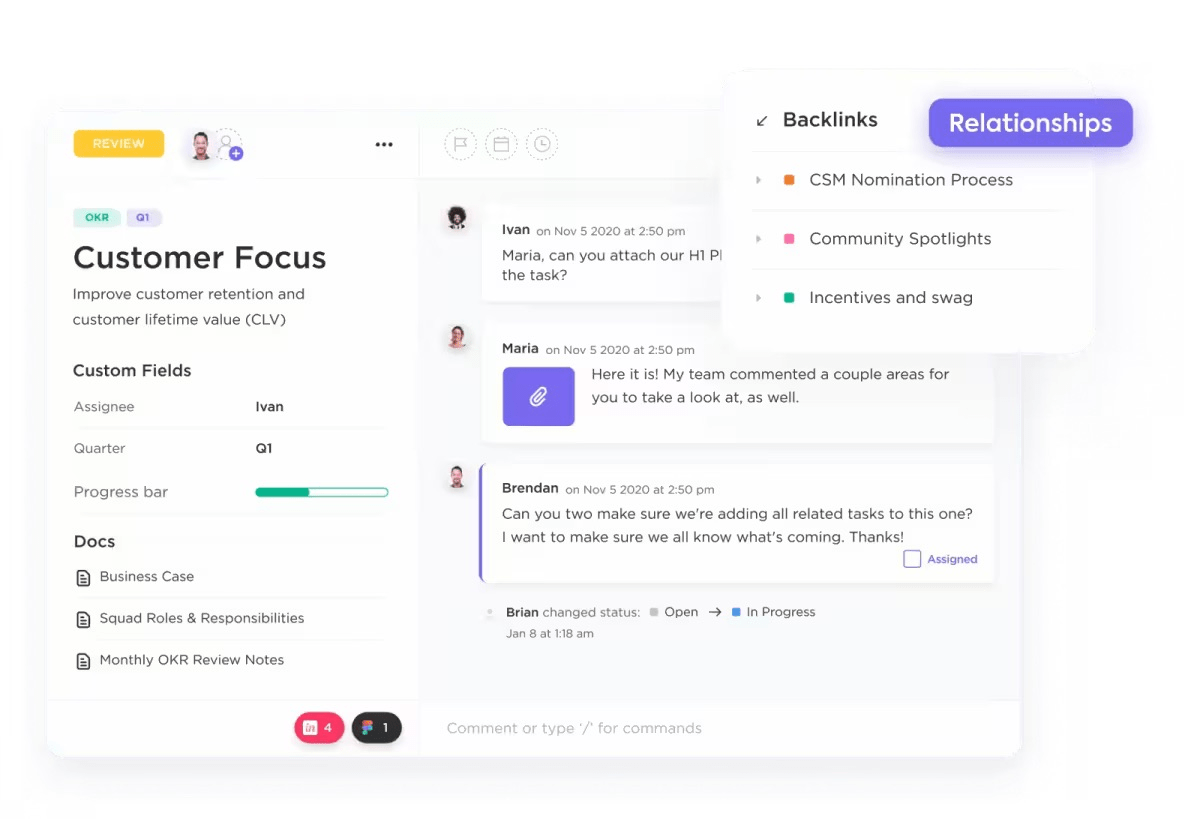How to Improve Team Morale and Align Your Team at Work

Sorry, there were no results found for “”
Sorry, there were no results found for “”
Sorry, there were no results found for “”
Happy employees are good for business. But keeping everyone pumped up at all times is difficult.
According to a Gallup report, 59% of employees globally are ‘quiet quitters,’ while 18% are actively disengaged or ‘loud quitters.’
Workplaces worldwide are losing out on productivity because of this—productivity loss owed to low engagement levels at work amounts to $8.8 trillion annually!
So what causes this gloom and doom? Many factors are at play here, such as the changes in work culture post-pandemic, lack of communication, mass layoffs, and increasing stress levels.
Enter the HR pros! They are the real MVPs for making you and your team feel supported and engaged at work. They aim to create a high-performing work culture and enforce employee-friendly policies that help boost productivity.
You know you work at a high-morale company when you:
This article is a good starting point for that much-needed perspective. Let’s look at ways to boost employee morale using technology and implementing actionable leadership strategies.
Team morale is the collective optimism, enthusiasm, and confidence of a group of people working together in an organization. It reflects the overall attitude of team members toward their co-workers, their work, and their organization.
Employee morale matters because it is the key to a happier workplace, where colleagues stick around longer rather than jumping ship at the most minor inconvenience. Here’s why an inclusive workplace makes a huge difference:
Boosting employee morale can work wonders for your company culture as well as improving staff productivity, creativity, and collaboration. Conversely, low morale can harm employee satisfaction and lead to weak performance.
Low company morale is a sneaky disruptor that can hamper company productivity. And it happens because of these reasons:
But before you begin developing strategies to improve team dynamics and boost team morale, take a moment to identify which of these factors are affecting your workforce.
Positive employee morale starts with honest communication and clear guidance on each team member’s role and responsibilities.
Apply these practices to make your team return to work stronger. You’ll be surprised to see them more resilient and driven toward their work!
Positive employee morale may not remain so consistent at all times. Whether yours is a remote, hybrid, or in-office workspace, you need to have proper strategies to motivate the workforce while focusing on their physical and mental health.
Here are some practical ways of doing that:
In remote or hybrid setups, employees often struggle to communicate and collaborate with other team members. It affects their quality of work and prevents them from building meaningful relationships among themselves.
A collaboration tool like ClickUp can be a great solution to bring your cross-functional teams’ projects under one unified platform.
With ClickUp’s transparent ecosystem, your team members can visualize their progress toward a common goal, stay in touch with their peers, and feel inspired to improve themselves without feeling threatened by others’ progress.
From streamlining employee training to fostering real-time collaboration, ClickUp can help boost staff morale in multiple ways:






Cultivating a cohesive workplace culture is the goal of any organization. Start by integrating company values into your day-to-day operations. Clarify how each team member can contribute to these values and establish a collective sense of purpose and unity.
This alignment is especially crucial for remote team members, who may otherwise struggle to grasp the company’s vision, mission, and values.
Promote employee mental and physical well-being by encouraging them to take micro-breaks during the workday. Brief pauses prevent burnout, improve focus, and boost productivity.
During these breaks, employees can have a snack, take a walk, stare outside the window, stretch their legs, pet a furry friend, or do whatever it takes to unwind.
Make your employees mindful of work-life balance and promote effective time management. Simplify complex work processes with customizable templates such as project management templates or HR templates, and have your teams manage their time better, reduce their workload, and maintain a positive outlook throughout.
Go a step further and encourage them not to take work home, avail their paid time off (PTO), and be incommunicado during holidays.
Arrange team-building activities for your team to encourage collaboration and communication. Engaging in shared experiences, such as problem-solving challenges or outdoor adventures, develops unity and camaraderie among colleagues.
These experiences can directly and positively impact staff productivity, creativity, and job satisfaction.
Recognize and celebrate individual and team achievements, no matter how big or small. A culture of appreciation improves employee engagement, pushes your team to attain bigger milestones, keeps them motivated, and strengthens their sense of direction.
It inspires other team members to put their best foot forward and aim higher.
Who doesn’t like being rewarded for a job well done? Design a transparent rewards system to acknowledge outstanding performance. This can be done by offering bonuses, gift cards, travel vouchers, or other tangible benefits.
Incentives validate the hard work of an employee. These rewards create a positive reinforcement loop, prompting everyone to strive for excellence and maintain high morale.
Schedule periodic one-on-one meetings with your team members to understand their workload, challenges, career goals, and expectations. Try to accommodate a meaningful 15–30 minute catch-up session every week.
For instance, managers can assign buddies to complete the task faster if a team member struggles to meet deadlines. This personalized approach makes employees feel supported, addresses their concerns, and offers quick resolution.
A thriving workforce reflects a supportive work environment and vice versa. Let’s understand how:
A positive workplace environment includes supportive leadership, open communication, and a focus on employee engagement. Keep those opportunities for professional growth flowing and reap the benefits of a highly engaged workforce.
No matter where anyone’s from, everyone likes to feel supported and respected when they come to work. That sense of belonging is a real game-changer for teams—it keeps everyone high on morale.
A positive culture, too, indicates high morale. It’s all about shared values, purpose, and oneness with your work crew.
Shoutout to all the team leaders and people managers who give extra attention to their employees’ needs!
You create a culture with sky-high morale when you keep all lines of communication open, foster feedback transparency, and align company goals with individual aspirations.
That said, navigating the relationship between employee morale and the work environment can sometimes prove challenging in hybrid or in-office setups.
Employee morale plays a crucial role in keeping remote employees engaged and productive. All you have to do is keep these aspects in mind:
Use the right set of tools and strategies to make your remote workforce feel like a close-knit crew, even if they are in different parts of the world.
A vibe of positivity and enthusiasm will set your workplace apart from an average one. When employee morale improves, so does your company’s work culture because it,
But work isn’t always sunshine and rainbows. Maintaining consistently high morale can be a real challenge when things get stressful—like tight deadlines, budget cuts, or big changes in the company.
Such situations then call for you to be more proactive. Open discussions with your team members, lending them a hand of support, and offering stress management tools will help you sail through!
Employees are the driving force of an organization. If you understand the importance of high team morale and are willing to go the extra mile, you’ll have a thriving workplace in no time!
Begin your initiative with an all-in-one work management tool like ClickUp. It streamlines communication and collaboration, lets you visualize how individual efforts move the needle in a large organization, and simplifies business processes to improve efficiency.
Make your team feel like they’re working for more than a paycheck.
Get started with ClickUp today!
When you encourage open communication, celebrate employee wins, and value collaboration, improving your team’s morale doesn’t take too long.
If your team feels demotivated, offer them your support. Recognize their efforts and involve them in decision-making to provide extra motivation.
You can rebuild your team’s morale by setting clear expectations, communicating goals, and offering your guidance.
© 2025 ClickUp